When a team of very determined rescuers arrived at the building site of a new shelter for animals in need, they thought it was going to be just a regular day.
However, as soon as they entered, they noticed something lying on the ground.
Upon closer inspection, they realized it was a little puppy.
It didn’t take them long to figure out that somebody just threw this sick little pup over the fence, thinking that the rescuers would take him in and forgetting the fact that the puppy could be severely injured that way.
Nevertheless, the rescuers didn’t have too much time to think about it – they had to help the poor guy!
Help Is Here
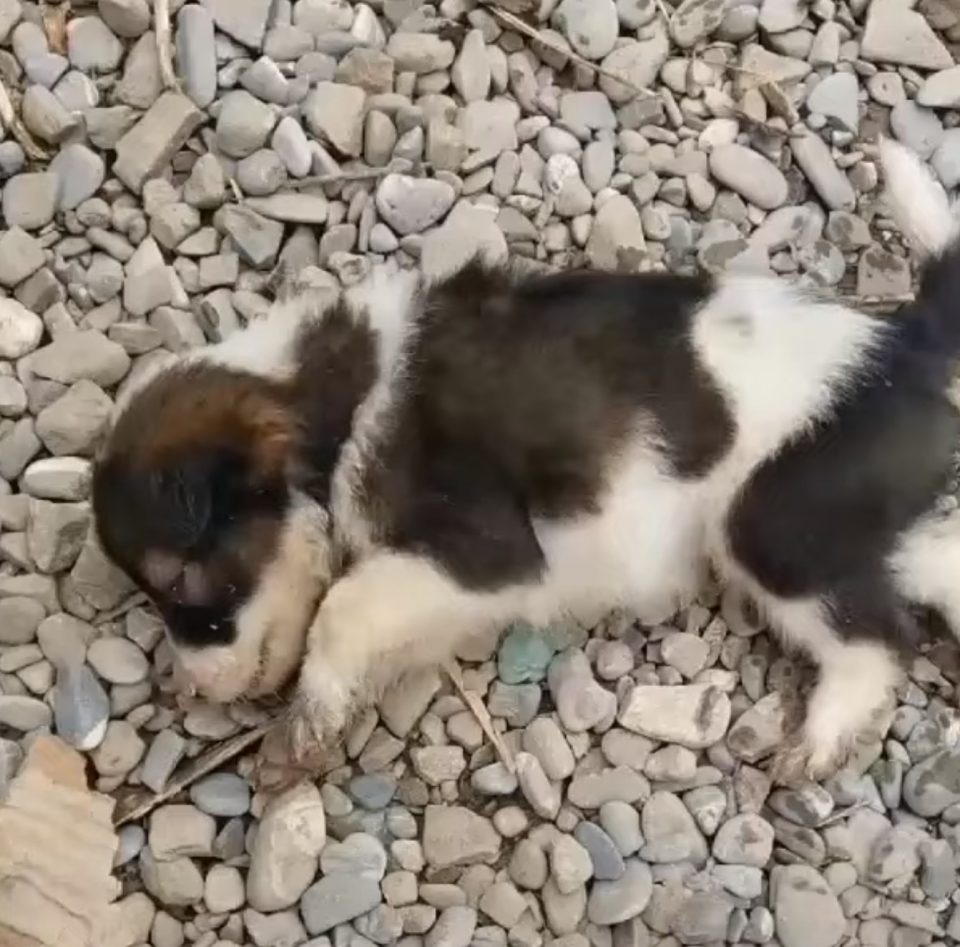
Upon first glance, the rescuers realized that the pup was so tired he could not sit up. He was also constantly crying and appeared to have some breathing problems.
Luckily, one of the rescuers was also a vet so he immediately gave the pup some IV in order to rehydrate him. He also prepared some antibiotics that would ensure his recovery.
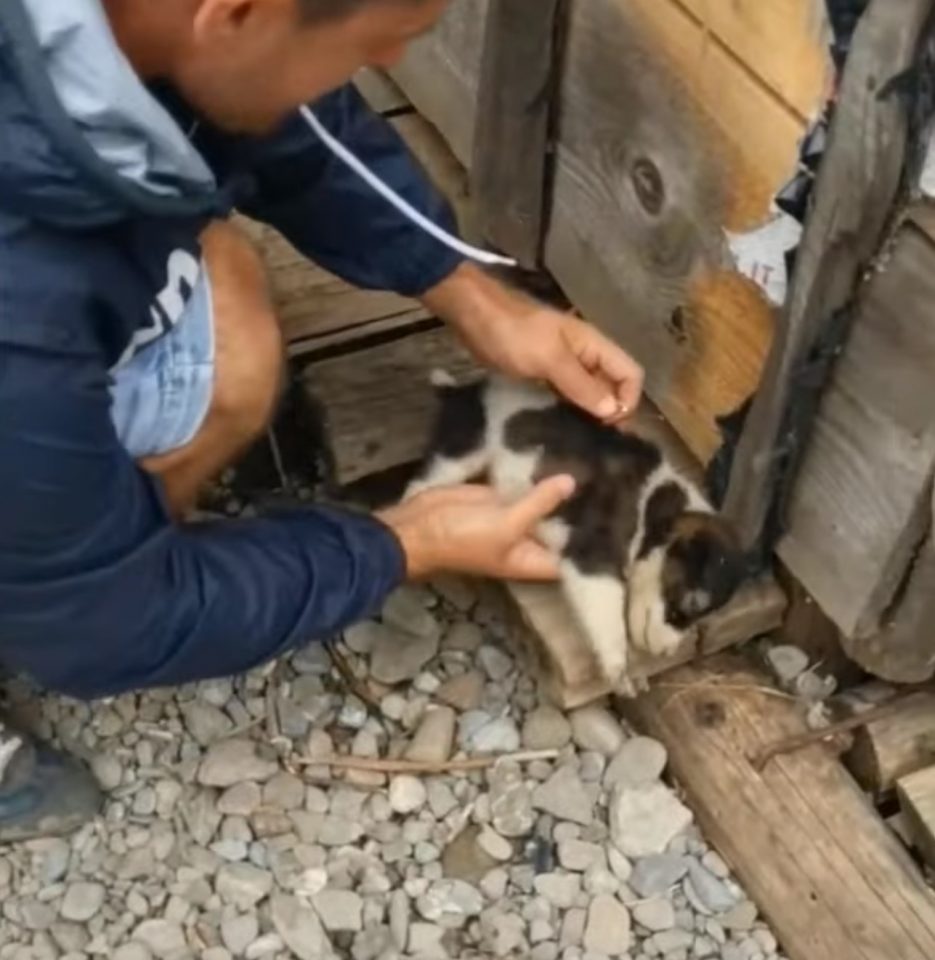
As the rescuers were looking over the sick pup, making sure that he was okay, they noticed a woman making her way over to them.
In her hand, she had another puppy!
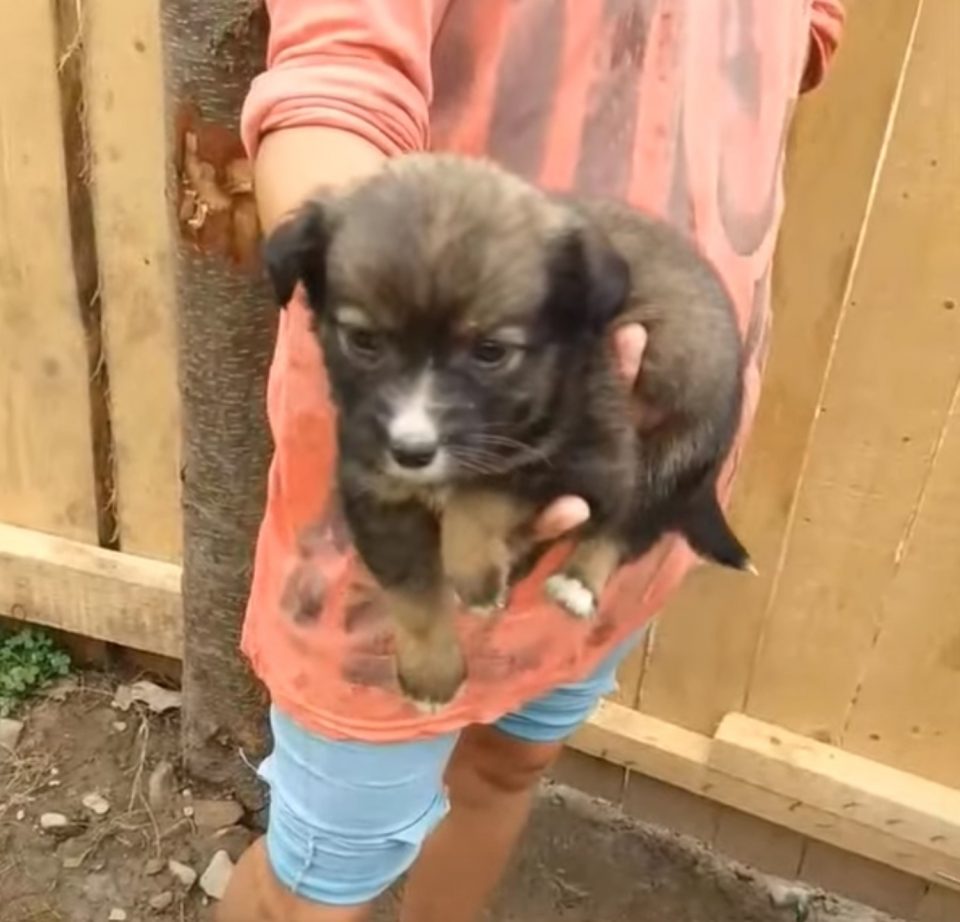
The woman informed the rescuers that she was unable to take care of the pup, and not wanting another pup to be abandoned, the rescuers took it in.
On the bright side, this pup was in perfect health and had an excellent appetite.
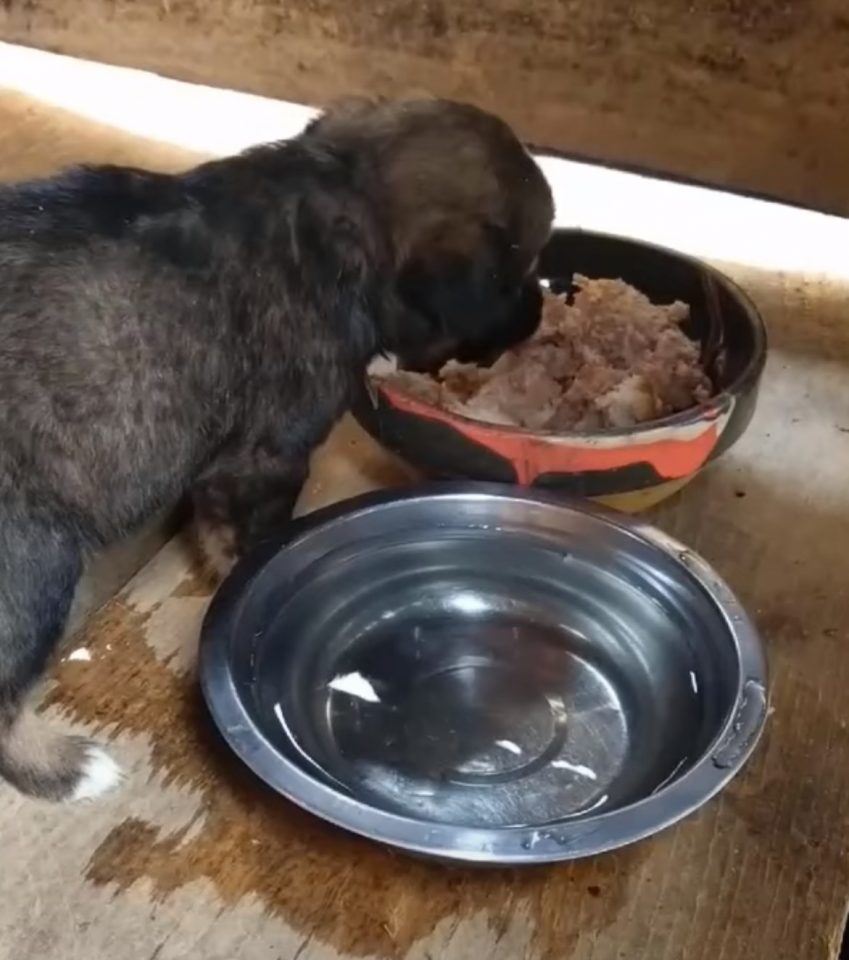
With such an event, the rescuers were completely reassured that what they were doing really was important and that this new shelter was needed.
Road To Recovery
The team took the pup to a proper veterinary office, where he received a thorough checkup.
The vets determined that he was suffering from hypothermia and also had some internal parasites.
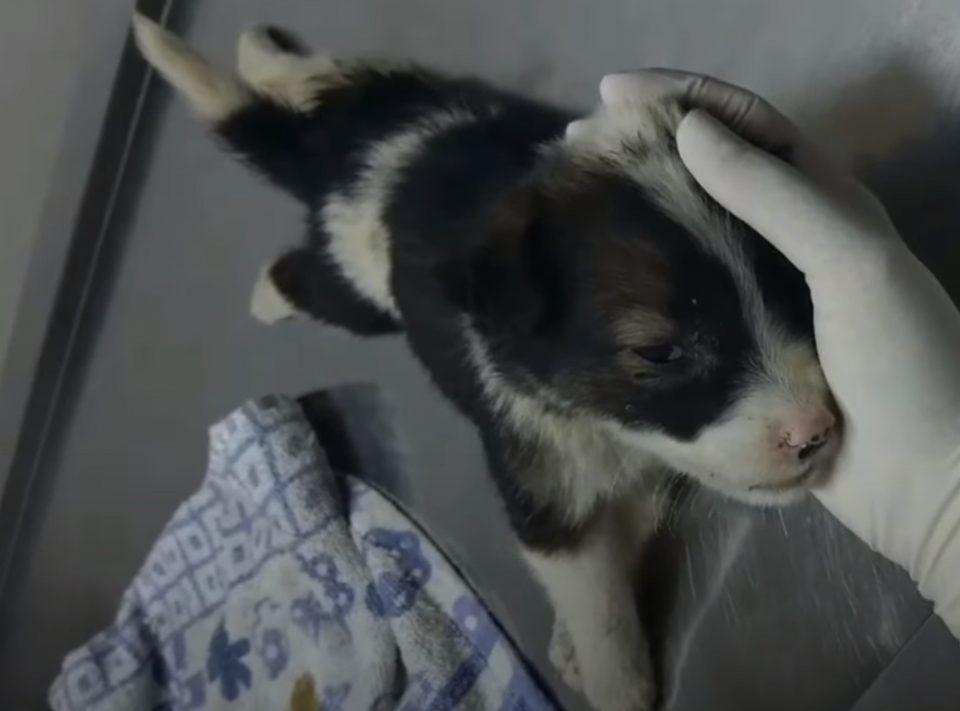
The strong pup was given all the medicine he needed to regain his health and get back on his paws.
Unfortunately, he couldn’t regulate his body temperature all on his own, so the vets had to help him with a blowdryer.
After he got a bit warmer, the pup received some additional medication as well as a yummy meal.
After only three days in the care of the rescuers, the pup started to recover.
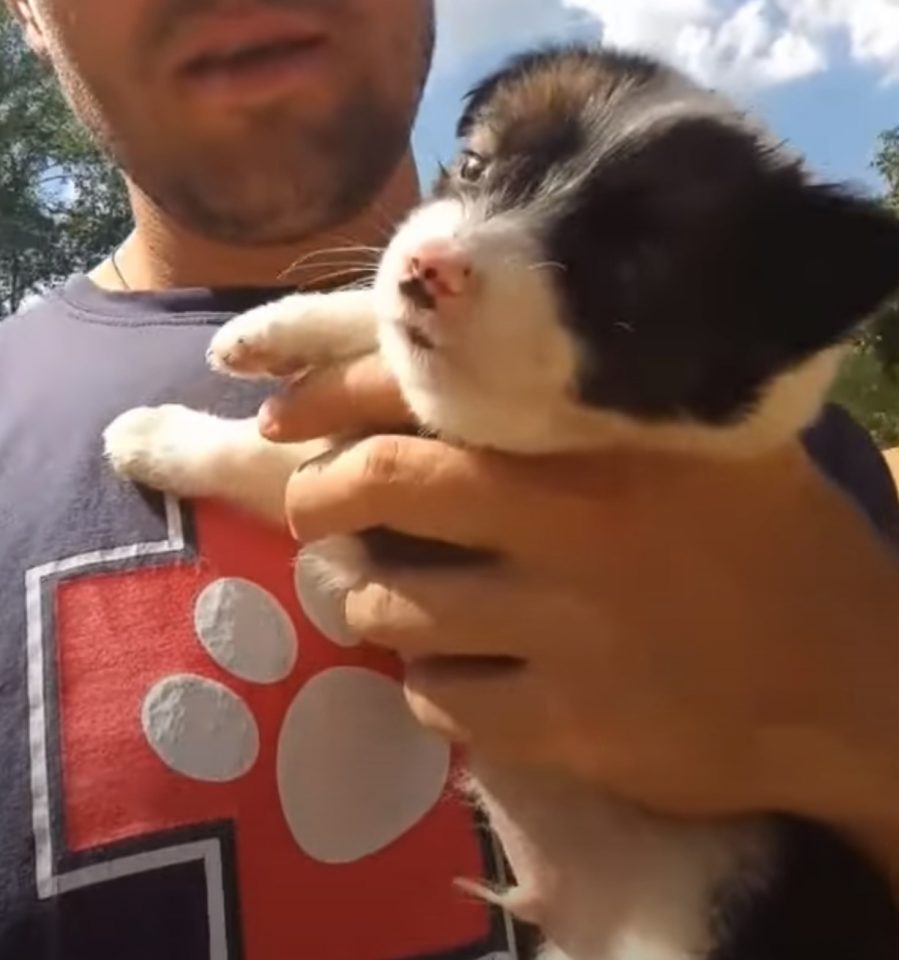
He simply loves being cuddled and massaged as much as possible as it not only makes him warm, but it also shows him that he is indeed worthy of love.
That, and the daily treatment of antibiotics, really did help this adorable pup to have a very speedy recovery.
The pup, now named Bebe, also has some furry friends. He loves hanging out with the pup that was rescued the same day as him as well as a couple of adorable cats!

However, Bebe still has a long road to recovery.
The hoomans around him are doing everything they can to help him and they hope that this sweet pup will one day have the best life ever, surrounded by kind hoomans, fun playdates, and cosy cuddles.
If you would like to donate and help Bebe in his journey, please contact Paws Show for more information.
If you’ve ever witnessed two dogs getting “stuck” together during mating, you might have found yourself wondering about this intriguing behavior. It’s a common sight that can leave many pet owners puzzled. Understanding why this happens can shed light on the fascinating world of canine reproduction. Dogs have unique mating behaviors that serve a specific purpose in their reproductive cycle. This natural phenomenon is more than just a physical act; it’s a complex process that plays a crucial role in the continuation of their species. So, why do dogs get stuck together? Let’s take a closer look at the science behind this curious behavior.
Understanding the Mating Process in Dogs
The Role of the Copulatory Tie
During mating, male dogs have a bulbous gland at the base of their penis that swells after insertion into the female. This gland helps to lock the mating pair together. It ensures that the male’s sperm is properly delivered and increases the chances of successful fertilization.
Biological Reasons for Dogs Getting Stuck Together
When dogs mate, there is a surge of hormones that causes the vaginal muscles to contract around the male’s penis. This physiological response results in what is commonly known as the “tie” or “knot.” This mechanism is an evolutionary feature that aids in successful insemination by preventing semen leakage and ensuring a higher likelihood of conception.
The Physiology Behind the Phenomenon
The Male Dog’s Reproductive Anatomy
Male dogs have a unique reproductive anatomy that plays a crucial role during mating. When a male dog mates, a bulbous gland at the base of its penis swells. This swelling helps in locking the mating pair together, facilitating successful delivery of sperm. This mechanism, known as the copulatory tie, ensures that the sperm is deposited effectively for fertilization.
The Female Dog’s Role During Mating
During mating, female dogs also play an important role. The surge of hormones triggered by mating induces contractions in the vaginal muscles of the female dog. These contractions, along with the swelling of the male’s gland, lead to the formation of the “tie” or “knot”. This locking mechanism prevents semen leakage, increasing the chances of successful fertilization. The female dog’s active participation in this process is vital for ensuring the continuation of the species.
This intricate mating process showcases the unique evolutionary mechanisms at play in the reproduction of dogs. Understanding the physiology behind why dogs get stuck together sheds light on the fascinating intricacies of canine reproduction.
The Significance of ‘Getting Stuck’
Ensuring Successful Reproduction
When dogs get stuck during mating, it’s nature’s way of ensuring successful reproduction. The tie created by the swollen gland in male dogs and the contractions in female dogs’ vaginal muscles help prevent semen leakage. This mechanism enhances the chances of fertilization by keeping the sperm within the female reproductive tract for a longer time. It’s a critical part of the mating process that aids in successful conception.
Possible Risks and Complications
While the mating tie is essential for successful reproduction, there are potential risks and complications associated with it. One common issue is injury or discomfort to one or both dogs if they try to separate prematurely. It’s crucial to allow them to naturally disconnect to avoid any physical harm. Additionally, inexperienced dogs or those with health issues may face challenges during mating, leading to complications. Understanding these risks can help dog owners provide necessary support and intervention if needed.
Addressing Common Myths and Misconceptions
Debunking Myths About Dog Mating Behavior
Let’s clear up some common myths about why dogs get stuck together during mating. One myth is that separation during mating is harmful and must be avoided at all costs. However, it’s essential to understand that dogs may accidentally separate during mating without causing harm. This separation doesn’t necessarily affect the success of fertilization. Another misconception is that the tie can be painful for dogs. While it may look uncomfortable, the copulatory tie is a natural part of the mating process and doesn’t typically cause pain to the dogs involved.
The Importance of Responsible Pet Ownership
Responsible pet ownership is crucial when dealing with dog mating behavior. It’s essential to remember that breeding should be a well-thought-out decision and not done impulsively. As a dog owner, you play a significant role in ensuring the well-being of your pets during mating. Providing a safe and stress-free environment for mating is vital for the health and safety of both the male and female dogs involved. Additionally, understanding the mating process helps you support your dogs effectively and intervene if necessary to prevent complications. Remember, responsible pet ownership includes being knowledgeable about the mating behavior of dogs and taking appropriate actions to ensure the safety and health of your furry companions.
Managing Mating and Breeding in Domestic Dogs
When to Seek Veterinary Assistance
If you notice any concerning signs during your dogs’ mating process, it’s crucial to seek veterinary assistance promptly. Signs such as excessive bleeding, prolonged mating without a successful tie, or any indication of distress in either dog should prompt a visit to the vet. Additionally, if your female dog is not conceiving after multiple mating attempts, consulting a vet can help identify potential fertility issues.
Considerations for Breeders and Pet Owners
For breeders and pet owners planning to mate their dogs, certain considerations can help facilitate a smooth and successful breeding process. Ensuring that both dogs are healthy, up to date on vaccinations, and free from genetic disorders is vital for producing healthy offspring. Moreover, providing a stress-free environment for mating and allowing sufficient rest between mating sessions can enhance the chances of successful fertilization. Responsible breeding practices involve thorough research, genetic testing, and a commitment to the well-being of both the parent dogs and the future litter.
Conclusion
Understanding why dogs get stuck together during mating sheds light on the natural process that enhances reproductive success. The copulatory tie plays a crucial role in sperm delivery and fertilization, benefiting both male and female dogs. Debunking myths about the tie being harmful, it’s essential to recognize its importance in preventing semen leakage and increasing conception chances. By promoting responsible pet ownership and informed breeding decisions, you can support dogs effectively and minimize risks during mating. Remember, seeking veterinary assistance when necessary and prioritizing the health and well-being of your dogs are key aspects of a successful and healthy breeding process.
Frequently Asked Questions
What is the importance of the copulatory tie in dog mating?
The copulatory tie in dog mating plays a crucial role in successful sperm delivery and fertilization. It helps prevent semen leakage, increasing the chances of conception.
Are there risks associated with premature separation during dog mating?
Yes, premature separation during dog mating can pose risks, such as reduced chances of fertilization and conception, potentially leading to breeding complications.
Are there common myths about dog mating behavior?
Yes, there are common myths about dog mating behavior, such as the misconception that the copulatory tie is harmful or painful for dogs, which is not true.
When should one seek veterinary assistance during dog mating?
Seek veterinary assistance during dog mating if you notice signs of excessive bleeding, distress, or any unusual behavior that may indicate a complication.
What are essential considerations for successful dog breeding?
Essential considerations for successful dog breeding include ensuring the health of both dogs, genetic testing, responsible breeding practices, and creating a safe mating environment.
[no_toc]

Hey there, I’m Janet Brooks, a dog-loving student from California. I’m all about helping pups in need, especially those without homes. Me and my awesome friends work together to give shelter and love to stray dogs. Oh, and I also write blogs about dogs to share helpful info.